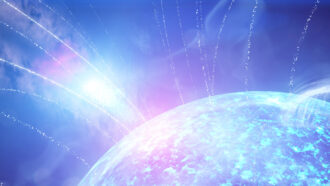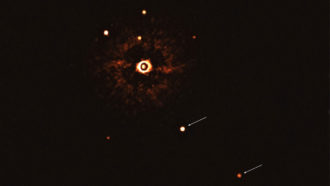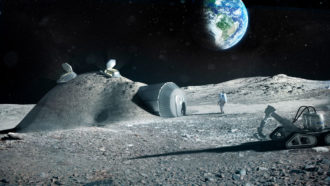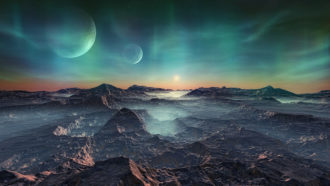
Lisa Grossman
Astronomy Writer, Science News
Lisa Grossman is the astronomy writer for Science News. Previously she was a news editor at New Scientist, where she ran the physical sciences section of the magazine for three years. Before that, she spent three years at New Scientist as a reporter, covering space, physics and astronomy. She has a degree in astronomy from Cornell University and a graduate certificate in science writing from the University of California, Santa Cruz. Lisa was a finalist for the AGU David Perlman Award for Excellence in Science Journalism, and received the Institute of Physics/Science and Technology Facilities Council physics writing award and the AAS Solar Physics Division Popular Writing Award. She interned at Science News in 2009-2010.

All Stories by Lisa Grossman
-
 Planets
PlanetsSigns of a hidden Planet Nine in our solar system may be an illusion
Hints of the remote planet, also called Planet X, relied on clumped up orbits of bodies beyond Neptune. A new study suggests that clumping doesn’t exist.
-
 Space
SpaceExploding neutron star proves to be energy standout of the cosmos
This is what scientists had suspected. But until one showed up outside our galaxy, they couldn’t be sure. Now they are.
-
 Space
SpaceStar of science and movies, the Arecibo radio telescope is dead
Broken cables led to catastrophic damage of its history-making dish. The U.S. National Science Foundation will now dismantle what remains.
-

Close-up of the sun reveals ‘campfires’
Solar Orbiter’s first images are in. The spacecraft’s pics show tiny, never-before-seen flares across the sun’s surface.
-
 Space
SpaceA weird cousin of our solar system is caught on camera
New photo reveals a cousin to our solar system. It’s star has a mass similar to the sun’s and is orbited by two gas giant planets.
-
 Planets
PlanetsSaturn’s moon Titan may host lots of dried lakes
Suspicious spots around the moon’s middle could be the beds of ancient lakes. If so, this might solve a 20-year-old mystery.
-
 Space
SpaceDeveloping planet emerges in a swirl of gas
Images of a young star 520 light-years away show a spiral of gas and dust swirling around it. A twist inside the spiral appears to be a planet forming.
-
 Space
SpaceOldest disk galaxy puts a new spin on galaxy growth
A spinning disk galaxy has been found in the early universe. Its existence is a surprise.
-
 Space
SpaceAstronauts may be able to make cement with their own pee
Lunar dust and a compound found in urine might one day be used to build future dwellings on the moon, a new study finds.
-
 Space
SpaceA first: Commercial rocket takes humans into space
Two NASA astronauts aboard the privately built Crew Dragon capsule are the first to be sent into orbit from U.S. soil since 2011.
-
 Planets
PlanetsPlanets with hydrogen skies could harbor life
Microbes can live in a hydrogen atmosphere. This points to new space worlds that host alien life.
-
